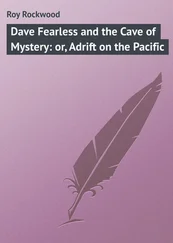Port Moresby and Tulagi were to be invaded and captured in early May. Once again, without being aware of it, Japan’s Naval General Staff was drawing closer to the island named Guadalcanal.
“STYKE ’N AYGGS, dammit, styke ’n ayggs!”
It came crackling over the teleradio in shrill and nasal urgency, this signal of imminent Australian departure, and it chilled the heart of Martin Clemens seated in his radio shack and watching the gray dawn of May 2 creep down the coast toward Snowy Rhoades on Cape Esperance at the western tip of Guadalcanal.
Though dismayed, Clemens was not entirely surprised. The day before the Japanese had hurled their most savage attack on the twin islets of Gavutu-Tanambogo in Tulagi Harbor. One of the RAAF’s remaining two flying boats had lumbered aloft with a huge hole in one wing, to disappear forever. The other had been caught on the water and smashed. It was later towed across the channel to Aola, where natives had dragged it out of sight and destroyed it.
So now the Japanese were truly coming and the Australians were leaving. Clemens and his handful of Europeans were all alone. How would the natives react to the Japanese?
Only last month a European had been murdered up in the Goldfields. One of the “bleddy boongs,” as most Australian planters described the natives, had done for Billy Wilmot with a long-handled ax. The interior of the poor old beachcomber’s hut had been spattered with blood, and the body, which Clemens had ordered exhumed, was a horrible, sickening sight. Luckily for most of the natives—the Christians—they had been at Good Friday services when the murder occurred. Of two pagan suspects, one of them owned just the ax to do the job; and on such flimsy evidence Clemens had taken the man into custody. But Clemens could not be sure. Moreover, the identity of the killer troubled him not so much as the fact of a European murdered at a time when plantations were being looted by rebellious natives and the Japanese were on their way. Through Clemens’s mind there flitted a phrase from one of the books on the Solomon Islanders: “These people are primarily and emphatically savages, with some good points certainly, but in their nature reigns unchecked the instinct of destruction.” 1
Clemens was also having difficulty of a lesser though perhaps more irritating nature with the Catholic fathers at the Ruavatu Mission a few miles west of Aola. He had advised them to take refuge inland. But Father Henry Oude-Engberink, the Dutch priest in charge, replied that he and the American Father Arthur Duhamel and the three European nuns at the mission would remain with their flock. They were neutral. The war was not their concern. Clemens tried to explain that the Japanese would certainly not be “neutral” toward the nuns, that to remain on the coast was dangerous and foolhardy when the mission party might maintain its neutrality in the safety of the bush, but Father Engberink was obdurate: his place was with his flock. Bishop Aubin at the mission headquarters in Visale on the western end of the island had already decided to follow a policy of neutrality. To take sides, that was the charge always raised against missionaries: that they served a foreign power. It was the age-old excuse for persecutions. No, the fathers and the nuns would give the Japanese no grounds for such false accusations. They served no power but God.
That was that, and the interview had ended on a note of cool cordiality.
And now, the Japanese were coming south. Now the time of preparation and of worry was coming to an end. Soon he would find out if the natives were really to be trusted, if a policy of “neutrality” would really impress the bloodthirsty Knights of Bushido, and if he, Martin Clemens, would be clever enough to keep his life. Now, he thought, mentally quoting from his constant companion, his only book, Shakespeare’s Henry V , now: “We are in God’s hands, brother.”
Next morning the Japanese invasion force under Rear Admiral Aritomo Goto glided into empty Tulagi Harbor. Goto put ashore troops of the Kure and Sasebo Special Naval Landing Forces—so-called Japanese “Marines”—as well as aviation and communications personnel to staff a seaplane base and radio station. Unhurried because unharried, Goto unloaded at his leisure; stocking the Emperor’s latest acquisitions with great quantities of oil and gasoline and an inordinately large supply of beer and sake, [3] Rice wine, pronounced to rhyme with rocky.
hard candy for the fliers, and cases of canned beef, pineapple, and crab meat.
Later there arrived the first of twelve float Zero fighter-planes and twelve Kawanishi flying boats, one of which was piloted by Lieutenant Commander Yoshio Tashiro, the brother-in-law of Saburo Sakai’s squadron commander. Another arrival was Mr. Ishimoto, the former Lever Brothers carpenter who was now returning to Tulagi as a conqueror. Ishimoto wore the uniform of a petty officer in the Japanese Navy, but he was nevertheless identified and reported by Martin Clemens’s scouts. The presence of the entire invasion force—the southern arm of the operation to cut the Australian-American lifeline—was also reported to the American carrier force to the south under Rear Admiral Frank Jack Fletcher.
Leaving the Lexington group to continue refueling, Fletcher hurried north with Yorktown and her group of screening ships. At dawn next morning, Fletcher swung Yorktown into the wind and flew off his strikes against Goto.
The Japanese in Tulagi were caught completely by surprise.
“Massa, massa!” one of Clemens’s scouts shouted, waking him. “Altogether Japan he catchem trouble!” 2
Clemens rushed to the shores of Aola Bay. Surrounded by delighted natives, he saw the American dive-bombers come plummeting out of the sun in long straight dives. Explosions rolled over the water. Pillars of smoke rose into the sky. Cheers and cries of derision rose from the throats of the scouts. They shook their fists and howled, “Japan he die-finish!” And of course, the reports of enemy destruction were exaggerated. It was claimed that nine ships were sunk. Actually, Yorktown ’s airplanes had put only a destroyer, two mine sweepers and a destroyer-transport on the bottom of those waters which, because of the scores of ships that were to perish in them, were to be known henceforth as Iron Bottom Bay. More important, Goto’s cocksure force had been sent racing north up the long straight Solomons sea corridor which was to enter history as The Slot.
Admiral Fletcher’s pilots had dropped the opening bombs in the Battle of the Coral Sea.
That night, while Admiral Goto streaked homeward through The Slot, the more powerful northern force steamed out of Rabaul. It was bound for Port Moresby. It sailed south, hoping to circle the tip of northeastern New Guinea and come up suddenly upon the big Allied base.
The light carrier Shoho and her screen accompanied the landing force. But a far more potent group built around the big carriers Shokaku and Zuikaku was slipping around the top of the Solomon Islands and racing south to catch the American force which had struck at Goto.
The next day, May 5, was uneventful. On the following day, May 6, Admiral Fletcher reunited his forces and headed Enterprise and Yorktown toward the tip of New Guinea. On May 7, the Battle of the Coral Sea was fully joined. In the first American attack ever launched upon an enemy carrier, Fletcher’s pilots pounced upon Shoho in a shower of bombs and torpedoes and sunk her in a matter of minutes. Because of this, the Port Moresby invasion was called off, and the troops sent back to Rabaul.
Next day Japan’s big carriers retaliated. They sank Lexington . But Shokaku was damaged and Zuikaku suffered severe losses in planes and pilots.
Читать дальше












